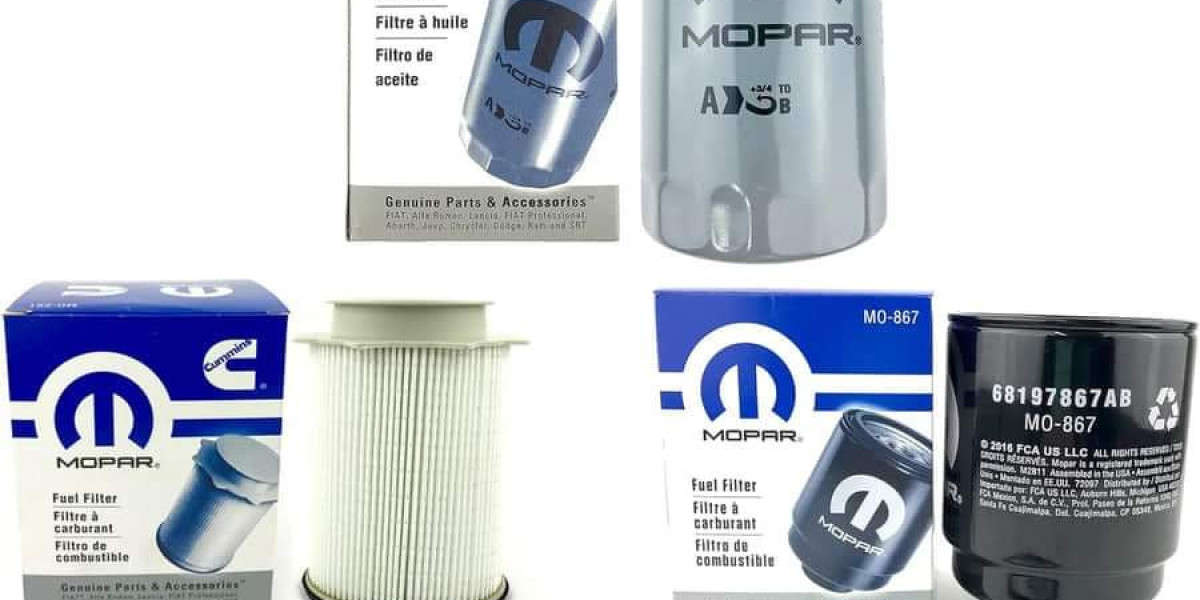Keeping your Cummins 6.7 engine running smoothly means paying attention to every part of its filtration system. One component that often goes unnoticed is the crankcase filter—also called the CCV filter (Crankcase Ventilation Filter). Replacing this filter on time can prevent oil vapor buildup, protect your turbo, and extend your diesel’s life.
In this guide, you’ll learn when and how to replace your Cummins 6.7 crankcase filter with clear steps and expert tips.
Why the Cummins 6.7 Crankcase Filter Matters
The crankcase filter, much like your truck’s fuel filter in function, traps oil mist and blow‑by gases before they reach your intake system. Over time, the filter becomes saturated, leading to higher crankcase pressure. This can cause leaks, poor engine performance, and even turbo damage.
Key benefits of timely replacement:
Maintains proper crankcase ventilation
Reduces oil contamination
Improves engine efficiency and longevity
Keeps emissions under control
If you own a Ram 2500 or Ram 3500 with a 6.7L Cummins, your maintenance schedule should include this important service.
When Should You Replace the Crankcase Filter?
Cummins recommends replacing the crankcase filter roughly every 67,500 miles or sooner if you drive in dusty, heavy‑load, or towing conditions.
Watch for these signs:
Oil residue around the filter housing
Unusual hissing sounds from the crankcase area
Reduced fuel economy
Warning messages on the dash (some models display a CCV filter service alert)
Sticking to this interval helps you avoid costly repairs later.
Tools and Parts You’ll Need
Before starting the replacement, gather these essentials:
OEM Cummins 6.7 crankcase filter (or trusted aftermarket equivalent)
Ratchet set and socket extension
Clean rags or shop towels
Torque wrench (optional but recommended)
Using genuine parts or quality equivalents is key to protecting your engine.
Step‑by‑Step Crankcase Filter Replacement
Follow these simple steps to get the job done efficiently:
1. Prepare the Work Area
Park on a level surface and let the engine cool down. Disconnect the negative battery cable for safety.
2. Locate the Crankcase Filter Housing
On most Ram trucks with the 6.7 Cummins, the filter is mounted on top of the engine, usually toward the rear near the firewall. Check your owner’s manual if unsure.
3. Remove the Old Filter
Release the clips or screws holding the cover.
Lift the cover carefully.
Pull out the old filter and inspect it. You may notice oil saturation or debris, which is normal after extended use.
4. Clean the Housing
Wipe down the housing with a clean rag. Avoid letting any debris fall inside. A clean seating surface ensures a proper seal for the new filter.
5. Install the New Filter
Place the new filter in the housing, ensuring it sits flush. Reinstall the cover and secure it with the clips or screws. Do not overtighten.
6. Reconnect and Test
Reconnect the battery cable. Start the engine and let it idle for a few minutes. Check for leaks or warning lights.
Pro Tips for Longevity
Use OEM parts for guaranteed fit and filtration quality.
Keep a maintenance log so you don’t miss service intervals.
Pair this replacement with an oil change for optimal results.
Inspect related components like hoses and seals while you’re under the hood.
Maintaining your 6.7 Cummins crankcase filter isn’t just routine; it’s proactive care that saves money and protects your investment.
Final Thoughts
Regular crankcase filter replacement is an easy task that yields big benefits. Following these steps ensures your Cummins 6.7 diesel engine remains reliable, powerful, and emission‑compliant for years to come.
FAQs
Q1: Can I clean and reuse my Cummins 6.7 crankcase filter?
No. These filters are designed for single use and must be replaced, not cleaned.
Q2: What happens if I ignore the replacement interval?
You risk excessive crankcase pressure, oil leaks, and potential turbo or engine damage.
Q3: Are aftermarket crankcase filters as good as OEM?
Some high‑quality aftermarket filters perform well, but OEM parts ensure exact fit and Cummins‑approved filtration standards.
Q4: Does replacing the crankcase filter improve fuel mileage?
Yes, a clean filter helps maintain proper engine ventilation, which can contribute to better fuel efficiency.
Q5: How long does it take to replace the crankcase filter?
For most DIYers, the process takes about 30–45 minutes with basic tools.








